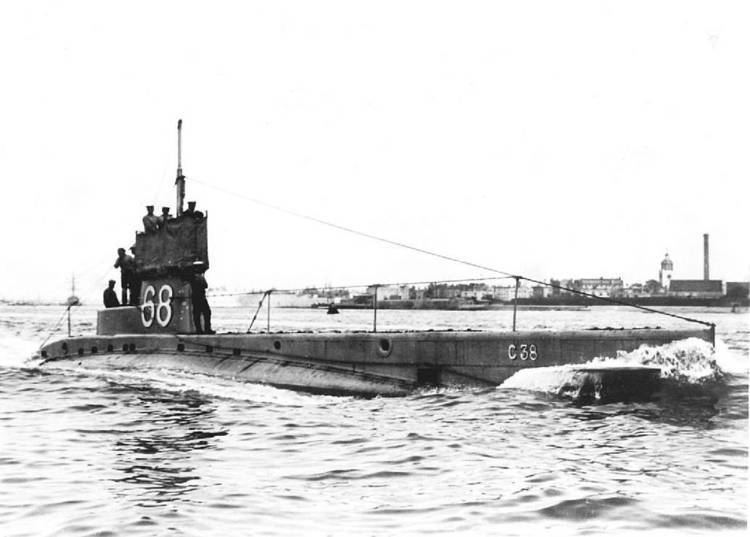Name HMS C7 Commissioned 23 May 1907 Construction started 9 December 1905 Length 43 m Draft 3.51 m | Laid down 9 December 1905 Launched 15 February 1907 Test depth 30 m | |
 | ||
Fate Sold for scrapping, 20 December 1919 Displacement 287 long tons (292 t) surfaced316 long tons (321 t) submerged Builders Vickers, Barrow-in-Furness | ||
HMS C7 was one of 38 C-class submarines built for the Royal Navy in the first decade of the 20th century. The boat survived the First World War and was sold for scrap in 1920.
Contents
Design and description
The C class was essentially a repeat of the preceding B class, albeit with better performance underwater. The submarine had a length of 142 feet 3 inches (43.4 m) overall, a beam of 13 feet 7 inches (4.1 m) and a mean draft of 11 feet 6 inches (3.5 m). They displaced 287 long tons (292 t) on the surface and 316 long tons (321 t) submerged. The C-class submarines had a crew of two officers and fourteen ratings.
For surface running, the boats were powered by a single 16-cylinder 600-brake-horsepower (447 kW) Vickers petrol engine that drove one propeller shaft. When submerged the propeller was driven by a 300-horsepower (224 kW) electric motor. They could reach 12 knots (22 km/h; 14 mph) on the surface and 7 knots (13 km/h; 8.1 mph) underwater. On the surface, the C class had a range of 910 nautical miles (1,690 km; 1,050 mi) at 12 knots (22 km/h; 14 mph).
The boats were armed with two 18-inch (45 cm) torpedo tubes in the bow. They could carry a pair of reload torpedoes, but generally did not as they would have to remove an equal weight of fuel in compensation.
Construction and career
C7 was built by Vickers at their Barrow-in-Furness shipyard, laid down on 9 December 1905 and was commissioned on 23 May 1907. The boat is often mistakenly credited with sinking UC-68 on 5 April 1917 off the coast of The Netherlands. However, this attack was made against UB-10, which survived. C7 was sold on 20 December 1919.
